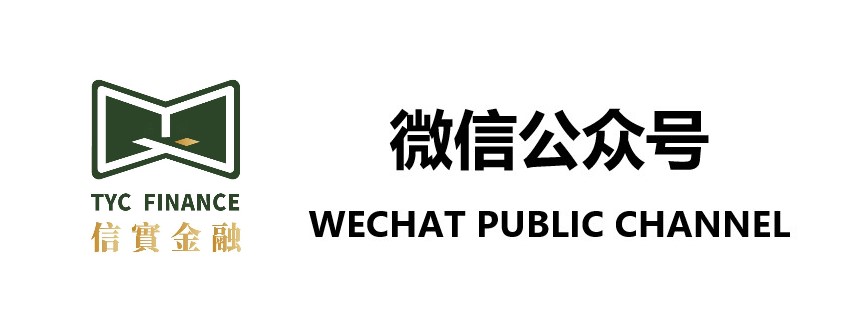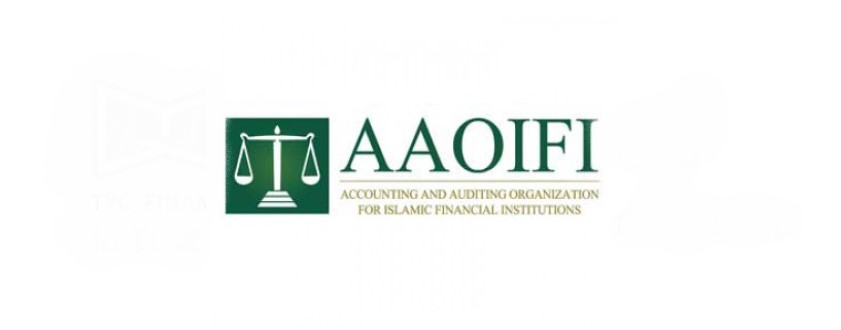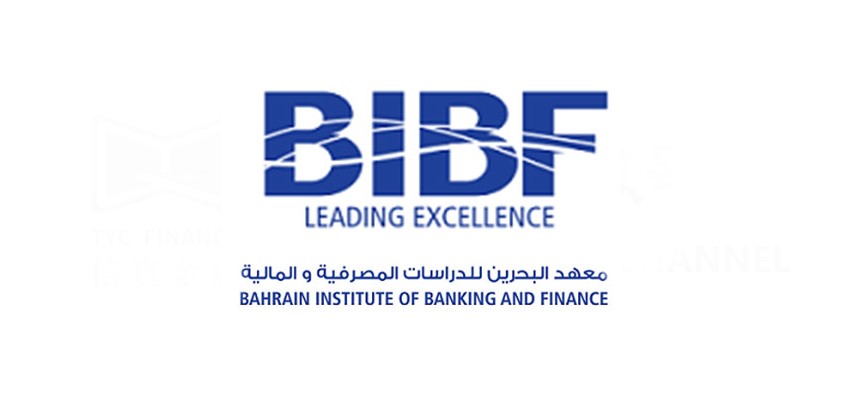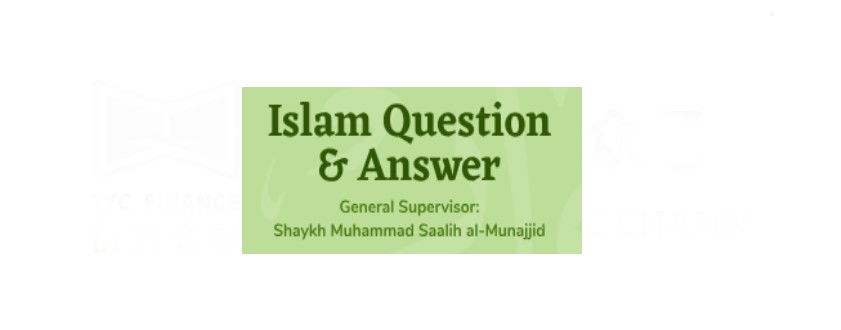

Market Updates and Information Exchange

The Middle East region is a land of two oceans, three continents and five seas, with a long history, profound civilization and rich resources. It is a typical diversified zone of geography, ethnic groups and religions, and also a strategic highland of the world's geopolitics. China has established diplomatic relations with all Middle East countries. Peace, cooperation, mutual benefit and win-win cooperation have become the main theme of China-Middle East relations.
Economic and trade cooperation is the cornerstone of China-Middle East relations. Since the 1990s, the Middle East has become an important supplier of oil and liquefied natural gas to China, and the economic and trade ties between China and the Middle East have become increasingly close. Since the belt and Road Initiative was put forward in 2013, While maintaining the momentum of cooperation in traditional areas such as energy and resources, infrastructure and project contracting, China and the Middle East have made breakthroughs and deepened cooperation in emerging areas such as high-tech industries. In 2020, The trade volume between China and the Middle East reached us $272.63 billion, making China the largest trading partner of Arab countries. China imported 250 million tons of crude oil from the Middle East, accounting for half of China's total imports in the same period, making China the largest oil importer in the Middle East.
Against the backdrop of the epidemic crisis and profound changes unseen in a century, economic and trade cooperation between China and the Middle East under the Framework of the Belt and Road enjoys a solid foundation and bright prospects. China's new development pattern and the alignment of major development strategies of other countries will help unleash the potential of cooperation between the two sides as a driving force for cooperation. We will turn our economic complementarity into a driving force for development and a source of medium - and long-term economic growth. By analyzing the multi-dimensional economic data of the Middle East, this report accurately grasped the economic development characteristics of the Middle East and discussed the complementary advantages and key areas of the economic and trade cooperation between China and the Middle East, which has important decision-making support and direction advice value for the expansion of the cooperation between China and the Middle East in the future.
01
Economic Fundamentals in the Middle East:
Oil and gas is a pillar industry with a rich demographic dividend
1. On average, China is a middle-income country, with six GCC countries leading the way
According to the World Economic Outlook Report released by THE International Monetary Fund (IMF) in April 2021, the total GDP of 17 countries and regions in the Middle East in 2020 (Syria data missing) is 3.82 trillion US dollars, accounting for 4.5% of the world. The total population is 434 million, accounting for 5.7% of the world, and the per capita GDP is about 8,814 US dollars. At the level of middle-income countries.
According to the per capita GDP data of 17 Countries and regions in the Middle East by IMF in 2020 (Table 1), Qatar ranks 11th in the world in per capita GDP and is a high-income country. Israel, THE United Arab Emirates, Cyprus, Bahrain, Kuwait, Saudi Arabia and Oman have a per capita GDP of us $14,000 to US $44,000, which is higher than the world average and belongs to the upper middle income countries. Turkey and Iran are middle-income countries; Iraq, Jordan, Egypt, Palestine and Lebanon are low - and middle-income countries with per capita GDP of 2,800 ~ 4,300 US dollars. Yemen is a low-income country with a per capita GDP of only $620.
For the convenience of analysis, this report divides the Middle East region into two categories: six GCC countries, Israel and Cyprus, and other Middle Eastern countries. The former represents the high and upper middle-income countries in the Middle East, while the latter represents the middle, low and middle income countries.
Qatar, the United Arab Emirates, Bahrain, Kuwait, Saudi Arabia and Oman, the six high-income countries, are the founding members of the Gulf Cooperation Council of Arab States (HEREINAFTER referred to as the GCC 6). The GCC is the most important political and economic organization in the Gulf region. The six GCC countries are rich in oil and natural gas resources, and their proven crude oil reserves account for 45% of the world's total.
2. Single industrial structure, with oil and gas as the number one pillar
▶ The six GCC countries are highly similar, and Israel is highly industrialized
The industrial structure of the six GCC countries is relatively single and similar, with industry and service accounting for about 40-50% each, and agriculture accounting for only 1 or 2 percentage points. To be specific, oil and gas are their common pillar industries, while agriculture and other industries are heavily dependent on foreign countries.
In Cyprus, financial service industry and tourism are the leading industries. The output value of the service industry accounts for about 72.8% of GDP, and the employees account for 80% of the employed population. Plastics, clothing, footwear and chemicals are important industrial products. Israel is the only developed country in the Middle East with a high degree of industrialization, especially in the fields of electronics, communications, computer software, medical equipment, biotechnology, engineering agriculture and aviation.
▶ Turkey, Iran, Iraq, and Egypt have an industrial base
Turkey is a founding member of the Organization for Economic Cooperation and Development (OECD) and a member of the G20 group. It has a certain industrial base and its industrial structure is similar to that of developed countries, with modern service industry as the main component.
Both Iran and Iraq are resource-based countries, that is, their economic development mainly depends on oil and natural gas. Iran has the world's fourth largest proven oil reserves (21.7 billion tons, or 9.1 percent) and the world's largest proven natural gas reserves (113.36 billion cubic meters, or 17.1 percent). Iraq nationalized its oil industry in 1973, and ranks fifth in the world in proven oil reserves (19.6 billion tons, or 8.4%). 70% of Iraq's natural gas is associated with oil.
Egypt is the most populous country in the Middle East and the second most populous country in Africa, as well as the third largest economy in Africa. It is an open market economy with relatively complete industrial, agricultural and service systems. Oil and gas industry accounts for 13.6% of GDP. Egypt is also the largest steel producer and consumer in Africa. Among the service industries, tourism and shipping are the pillar industries.
Jordan is relatively poor in resources, and the main pillars of its national economy are remittances, foreign aid and tourism. Deserts cover more than 90% of the country and are one of the top ten countries suffering from severe water shortage in the world. It is also the largest per capita recipient of foreign aid in the world. Manufacturing is the number one sector in GDP, accounting for about 19% of GDP in 2019. Jordan has abundant oil shale reserves of 70 billion tons, the fourth largest in the world.
Lebanon, which has a relatively weak agricultural and industrial foundation and four pillar industries of its economy, including finance, overseas remittance, tourism and trade, is facing a serious economic crisis due to political deadlock and the COVID-19 pandemic.
3. The median age is 28.2 years and the natural growth rate is 3‰ higher than the global one
Countries in the Middle East have a relatively young median age and a natural growth rate 3‰ higher than that of the world, which means they will enjoy a relatively large demographic dividend in the next 30 years. According to the 2019 World Population Prospects report released by the United Nations Department of Economic and Social Affairs, the median age in the 16 countries and territories in the Middle East (for which data are missing from Iraq) in 2020 is 28.2 years, 2.6 years lower than the world's 30.9 years. Countries with high PER capita GDP also have a higher median age, with Cyprus and GCC countries firmly at the top of the list. Syria, Egypt, Jordan, Iran, Palestine and Yemen all have median ages more than six years younger than the world, and Yemen, with the lowest GDP per capita, is even 10 years younger.
According to the United Nations forecast, in 2020-2050, the natural population growth rate of West Asia is about 3‰ higher than that of the world. About 60-80% of the population in the Middle East is under the age of 30. The large young population combined with the rapid natural population growth rate has prepared a rich labor reserve for the development of light industry and manufacturing industry, and also created favorable conditions for the growth of Internet and consumption fields.
02
Economic and Trade cooperation between China and the Middle East:
Complementary and win-win natural partners
1. As the largest trading partner of the Middle East, China's exports are highly complementary
In 2020, China was the largest trading partner of the Middle East. The trade volume between China and the 17 Middle East countries reached us $272.63 billion, down 7.9% year on year. China's export to the 17 Middle East countries reached US $144.34 billion, up 5.8% year on year. Imports from 17 Countries in the Middle East reached US $128.03 billion, down 19.7% year on year. Saudi Arabia, the United Arab Emirates, Iraq, Turkey and Kuwait are China's top five trading partners in the Middle East.
From 2001 to 2020, China's import and export volume with 16 countries and regions in the Middle East (excluding Egypt) increased from 17.81 billion US dollars to 258.11 billion US dollars, an increase of about 14 times. In 2001, 16 Countries and regions in the Middle East accounted for 6.0 percent of China's imports and exports, rising to 10.8 percent in 2020.
Since 2001, the volume of Trade between China and the Middle East has experienced three rounds of rapid growth: 2001-2008, 2010-2014 and 2018-2019, with only declines in 2009, 2015, 2016 and 2020.
2. The main areas of cross-border investment: energy, construction and information technology
As a whole, the 17 countries and territories in the Middle East are the net inflow regions of FOREIGN direct investment. Kuwait is one of the few net exporters of foreign investment in the region, thanks to its large sovereign wealth fund.
The pandemic has had a sustained and severe negative impact on cross-border investment across the globe and across regions. Global fdi totaled just $1 trillion in 2020, down 35 percent from $1.5 trillion in 2019, and nearly 20 percent lower than in 2009 after the global financial crisis. In contrast, fdi in West Asia grew by 9% to US $37 billion in 2020, driven by a number of resource-related acquisitions. From the perspective of stock, the main sources of FOREIGN direct investment in the Middle East are Europe, the United States and other countries in the region (Cyprus, GCC six countries and Turkey rank first).
The top countries and regions in the Middle East for China's direct investment include the United Arab Emirates, Saudi Arabia, Israel, Cyprus, Kuwait, Qatar and Oman, as well as the six GCC countries and Israel and Serbia. Taking Saudi Arabia as an example, its investment in China mainly involves oil refining and petrochemical products processing and sales.
In 2019, China's OFDI flow was 136.91 billion US dollars. By the end of 2019, China's ofDI stock was 2,1988.8 billion US dollars, of which, the flow of direct investment to the Middle East was 2.747 billion US dollars, accounting for 2.0%, and the stock of direct investment to the Middle East was 25.437 billion US dollars, accounting for 1.2%.
China has become a major foreign investor in the Middle East's energy sector. State-owned enterprises are the main investors of China's investment in the Middle East, focusing on energy, infrastructure and building materials, etc. Private enterprises are also catching up in the Middle East, mainly investing in information technology, manufacturing, construction, trade service and life service industries.
3. Main fields of contracted labor: infrastructure, petrochemical and power transmission and transformation
The Middle East has always been one of the major markets for international project contracting, with the annual total of projects reaching more than 100 billion DOLLARS. Since the end of 1970s, Chinese construction engineering enterprises started to enter the international market including the Middle East and have become an important force in the international construction engineering market. In August 2020, ENR published its annual list of the "World's 250 International Contractors". A total of 74 Chinese enterprises were listed, accounting for 25.4% of international turnover. The number and business proportion of the listed enterprises continued to be the world's first, reflecting the important position of Chinese enterprises in the global infrastructure industry.
In 2019, China signed new contracts worth US $11.287 billion in Saudi Arabia, accounting for 27.5 percent of its award, and US $6.624 billion in the United Arab Emirates, accounting for 34.2 percent of its award. Moreover, the types of projects have also expanded from labor-intensive house construction, road repair and other simple civil construction to technology and capital intensive petrochemical industry, new energy, power transmission and transformation.
03
Prospects of china-Middle East economic and trade cooperation in the future
The recovery of global trade in goods and services, as well as cross-border investment, is likely to be lengthy and repetitive due to uncertainties surrounding the COVID-19 pandemic. Countries in the Middle East, especially the traditional oil exporting countries, hope to gradually get rid of the heavy dependence on oil, and promote the diversification of industrial structure and rapid economic growth through industrialization construction. Meanwhile, there is a huge demand and development space for infrastructure, energy and power, communication and information system construction. The Chinese economy has shifted from a stage of high-speed growth to a stage of high-quality development. With supply-side structural reform as the main task, we will accelerate the building of an industrial system that promotes coordinated development of the real economy, scientific and technological innovation, modern finance and human resources, and constantly enhance the innovation capacity and competitiveness of the Chinese economy to achieve steady and sustainable economic development. Facing similar challenges, shared paths, matching needs, complementary advantages and common development goals, the two sides have naturally become important partners.
Looking into the future, China and Middle East countries have broad space for development in energy, manufacturing and infrastructure connectivity. First, China and Middle East countries continue to expand and deepen cooperation in the energy field, and low-carbon energy has become a new direction of bilateral cooperation. Second, the industrialization needs of the Middle East can be well matched with China's advantages in manufacturing technology, production capacity and human resources, thus supporting the construction of the industrial system in the Middle East. Third, there is a strong demand for infrastructure construction in the Middle East. With the support of the Asian Infrastructure Investment Bank, China can deeply participate in the infrastructure development of the Middle East in terms of international project contracting and labor export.
, on the other hand, we should also clear to see the actual challenges faced in the bilateral economic and trade cooperation, such as the outbreak of uncertainty about economic downward pressure, the global energy structure transformation, geopolitical and terrorism risk, etc., in the future of China and the Middle East by continuing to strengthen strategic coordination and docking action, high quality to build "neighbourhood" all the way, We should promote all-round and in-depth mutually beneficial cooperation and build a higher level of partnership.
1. Energy: Low-carbon is a new direction for bilateral cooperation
More than half of China's crude oil imports come from the Middle East, which remains China's most important source of energy supply. At the same time, the global energy structure to the direction of green and low-carbon transformation, has become a general consensus. Chinese energy companies in the Middle East are shifting their cooperation focus from traditional energy to low-carbon energy.
China and the Middle East continue to enrich and expand the "oil and gas Plus" cooperation model, further open their respective oil and gas markets, and deepen cooperation across the oil and gas industry chain in oil and gas exploration, exploitation, storage, transportation, refining and other fields. At the same time, many countries in the Middle East are speeding up the energy transformation. The International Energy Agency report shows that by 2030, the total power generation capacity of renewable energy (excluding hydropower) in the Middle East will exceed 192 gigawatts (GW), 17 times the current level, of which solar power will account for more than 42%, wind power about 35%. In the future, solar power generation and wind power will see rapid development. China has the world's leading technologies in wind power and photovoltaic power generation. Mutually beneficial cooperation between the two sides in renewable energy will jointly foster new economic growth points and promote green and sustainable economic development.
2. Manufacturing: Industrialization is a new growth point for mutually beneficial cooperation
In recent years in the Middle East oil, natural gas exporting countries realize more and more serious crisis, on the one hand, the price of crude oil and natural gas price volatility of the serious impact on the economy, and on the other hand the world toward low carbon, clean energy structure transformation, the traditional energy demand share continues to decline, so the income is highly dependent on exports to oil and gas economic model transition, Economic development must be diversified and industrialized, encouraging the development of domestic manufacturing industries and attracting foreign investment and cooperation.
The great turmoil in the Arab world at the end of 2010 has made many countries in the Middle East more eager for peace, stability and development, and deeply realize that industrialization is the only way to achieve stable and orderly economic development. For example, there were only three countries in the Middle East with relatively formed industrial systems in the past: Egypt, Iraq and Syria. However, their industrial systems were abandoned and stagnant due to political instability and war.
In the context of the Belt and Road Initiative, China can give full play to its advantages in manufacturing technology, personnel, capital and experience, conduct all-round cooperation with Middle East countries, support their industrialization process and industrial system construction, and foster new growth points for economic and trade cooperation and medium - and long-term economic growth drivers.
3. Infrastructure Connectivity: Supporting economic and trade cooperation and economic growth
The overall level of infrastructure development in the Middle East is uneven. In particular, other Middle East countries still lag behind developing countries in terms of road density, railway density, electricity consumption and communication network infrastructure per capita. Infrastructure interconnectivity is China's "neighbourhood" one of the core content and an important part of the initiative, is China's important project contracting market in the Middle East and China important destination of construction enterprises "going out", to promote the Middle East to establish and perfect infrastructure, to economic growth and employment have a key for the host country.
One of the current economic development priorities in the Middle East is to accelerate the construction of railways, airports, ports and other infrastructure, such as the Gulf Cooperation Council unified power grid project, the Gulf Railway Network project, the new Suez Canal project and the Economic integration project in North Africa focusing on infrastructure interconnection. In addition, China and other Countries in the Middle East attach great importance to strengthening cooperation in energy infrastructure connectivity, jointly safeguarding the security of oil and gas pipelines and other transport routes, and taking the construction of cross-border electricity and power transmission routes as an important task.
The Middle East infrastructure construction project market is characterized by high capital investment, high risk and high rate of return. Besides the telecommunications sector, most governments in the Middle East still lead the investment and construction of infrastructure and have protective policies for local companies. Therefore, Chinese enterprises and relevant institutions must make preliminary preparations and risk management in advance to carry out infrastructure business in the Middle East.
04
Conclusions and policy recommendations
Located at the core of Europe, Africa and Asia, the Middle East is also a key region for the Belt and Road Initiative. Countries in the Middle East are natural and important partners for China to complement each other and achieve win-win results. China is the largest trading partner of the Middle East, an important foreign investor in the energy sector and an important operator in the labor market of project contracting in the Region. Looking ahead, there is broad space for cooperation between China and Middle East countries in energy, manufacturing and infrastructure connectivity.
In order to continuously deepen the economic and trade cooperation between China and countries in the Middle East, forge a higher level of partnership, and realize the complementary advantages and win-win economic development of both sides, the report puts forward the following policy recommendations:
First, we need to synergize each other's development strategies with more substantive assistance from China. China needs to conduct more in-depth studies on the core demands of economic development of Middle East countries. The Belt and Road Initiative is closely aligned with Saudi Arabia's Vision 2030, Turkey's Middle Corridor Plan, Iran's seventh Five-Year Plan, the UNITED Arab Emirates' National Development Strategy for the Next 50 Years, Oman's Vision 2040, and Bahrain's Vision 2030 for Economic Development. In particular, "hard connectivity" of infrastructure and "soft connectivity" of rules and standards will bring long-term and stable common benefits to both sides.
Second, promote all-round cooperation in the energy field. Two-way flow in the energy field will continue to deepen the strategic partnership between China and the Middle East. The oil and gas sector and low-carbon energy are the "two wheels" driving both sides in the energy sector. China and countries in the Middle East have cooperated in traditional fossil energy for many years. Deepening cooperation across the oil and gas industry chain and further expanding cooperation in solar, wind, hydropower, nuclear and hydrogen energy will give a strong boost to the transformation of our energy structures and better guarantee the energy security of all countries.
Third, establish a trade and investment risk monitoring and early warning system in the Middle East. Due to cultural, language and other factors, Chinese enterprises in the Middle East lack a systematic understanding of the host country's political environment, investment and business environment and coping strategies, and are often poorly prepared for potential risks and emergencies. Relevant government departments may consider establishing a whole set of trade and investment risk monitoring and early warning system in the Middle East to help enterprises assess in advance and dynamically track the risks of economic and trade cooperation in specific countries, and provide timely guidance to enterprises.
Fourth, seize the opportunity of rapidly growing demand in the Middle East infrastructure market. In addition to a certain degree of air transport, the Middle East is in an underdeveloped position in terms of railways, roads, shipping and ports, especially logistics and storage facilities. The industrial competitiveness of Chinese enterprises in the field of infrastructure, corresponding machinery and equipment, logistics and other industries is of great use in the Middle East. Relevant enterprises should actively seize this rare historical window.


All the information provided on this website is for reference only and is not stock and securities investment advice. TYC Finance Limited does not assume any legal liability.
TYC FINANCE Copyright All Rights Reserved








